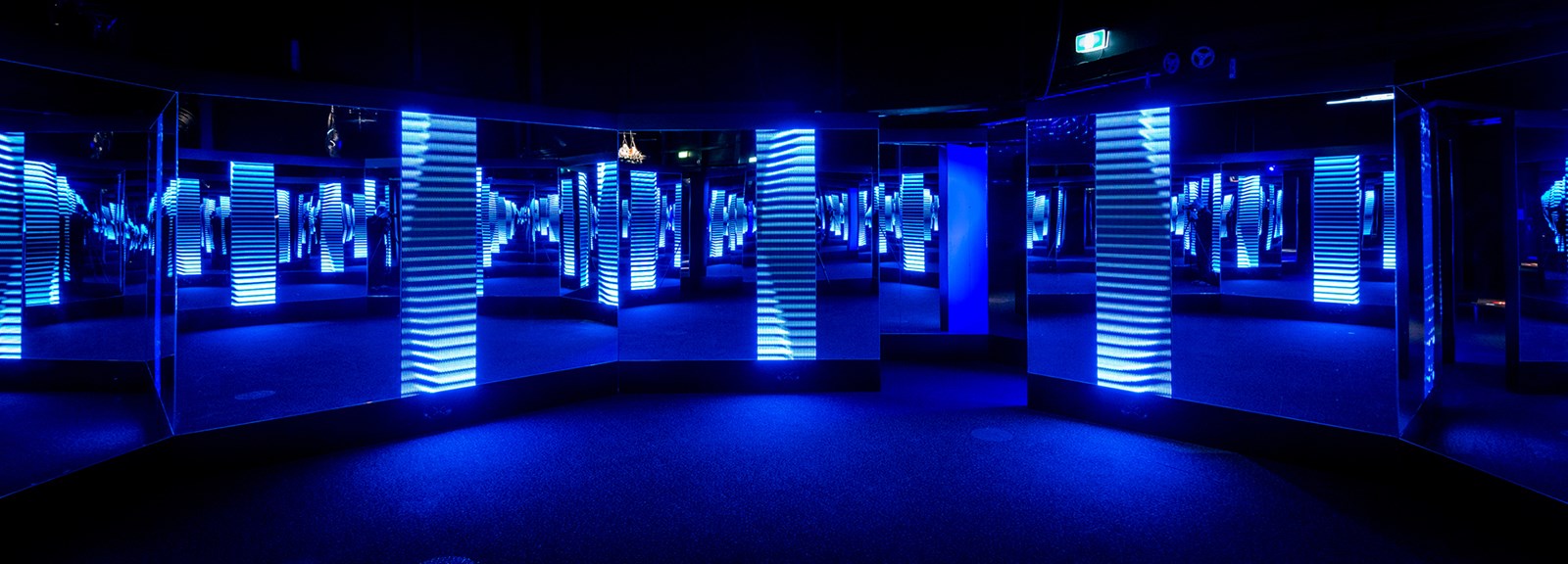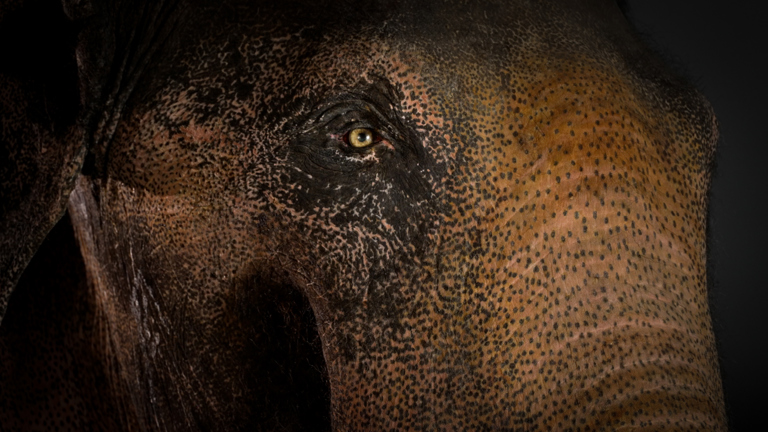Dream Deep
Science inspires art, art inspires dance.
In a stunning collaboration, Joe Meldrum performs an improvised dance piece inside Kit Webster's immersive installation DeepDream, which is currently on display as part of the LightTime exhibition at Scienceworks.
Art has always drawn inspiration from life, from cave wall engravings depicting everyday existence to photography capturing a moment in time. Artists have always looked toward the soft and severe faces of nature or to the visceral experiences of people from all walks of life. Edgar Degas painted dancers, Claude Monet was inspired by the shifting perceptions of light and colour and Leonardo Da Vinci studied physiology and anatomy in order to create realistic images of the human body. Gleaning inspiration from other artistic disciplines or academic fields has long been common practice.
Kit Webster has always felt the influence of science on his artistic practice. A Melbourne based artist who works across mixed mediums, his mesmerising light based artworks challenge the viewer's sense of space through creating visual illusion. Physics, the study of matter, motion, energy and forces, finds its way into his work, which aims to take these unseen but ever present elements in our world and create environments that remind us of their existence.
"The scientific intricacies of our environment have always fascinated me," Webster says, "particularly the way our environment influences our senses. Our human visual system utilises a technique called 'unconscious interference', by which our subconscious mind influences much of what we see around us, in effect creating our 'world'. It's our mind that makes up for the limitations of our vision by 'filling in the blanks'; this is particularly apparent in peripheral vision."
Webster's work DeepDream, commissioned by Scienceworks for the LightTime exhibition, is an immersive installation which explores the distortion of perspective, audio visual stimulus and form.
The octagonal room enclosed with LED panels features light sequences that shift around the central viewer, paired with an octophonic soundscape this creates a highly sensory experience, likened to a futuristic reality only dreamt up in a sci-fi novel:
"I see art and science as intrinsically linked in many ways, particularly when it comes to art that produces immersive sensory experiences. The infinity room is in essence a laboratory that allows for the exploration into the meditative qualities of light and sound in an all-encompassing environment. DeepDream encourages the observation of yourself in an alternate Neo-Futuristic environment and questions the distinction between what is 'light' and what is 'data'," explains Webster.
Recently Scienceworks invited local dancer and performer, Joe Meldrum to improvise a dance piece inside DeepDream and further explore how different art practices can inspire and influence each other. His reactive performance was captured to film.
"It was liberating to be in the space and just let go," Meldrum said. "Often dancers place a high importance on technique, how things look, or can be accustomed to being taught combinations to perform - yet it's increasingly clear that improvisation coming from creation, stimulation and response is also a very important tool to have both as a creative and even as a human being."
As a creative practitioner Joe spoke about the notion of finding inspiration from many things in his environment:
"Recently finishing Twyla Tharp's The Creative Habit, it was exciting to put many practices into place that she presents in the book. One of the most valuable being that we can find inspiration in so many things around us. If you're a creative of any type: go on your own 'excursion' and let yourself see, feel, hear, or taste the marvellous things around you - you'll be amazed of what they can inspire."
The final product is an engaging piece of improvised performance art that captures the aesthetic of the DeepDream infinity room in all its alluring beauty. Joe’s movements flow smoothly throughout the space, reflected in the mirrors creating a sense of multiple bodies moving intuitively through an ethereal and futuristic space.
As Webster puts it, "when a person enters the DeepDream infinity room, that person becomes absorbed into the abstract reality that has been created through the use of the mirrors, the surrounding LED video screens and the octophonic soundscape. The experience is different from our everyday 'normal' reality and more deeply connected to our subconscious mind. It’s an example of how I like to enhance people’s lives by providing opportunities for such meditative departures from reality."
To experience DeepDream yourself, visit LightTime: Illuminate your eyes, ears and mind at Scienceworks.










